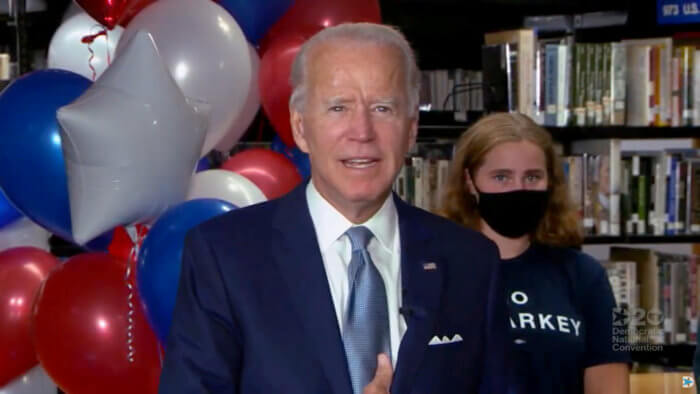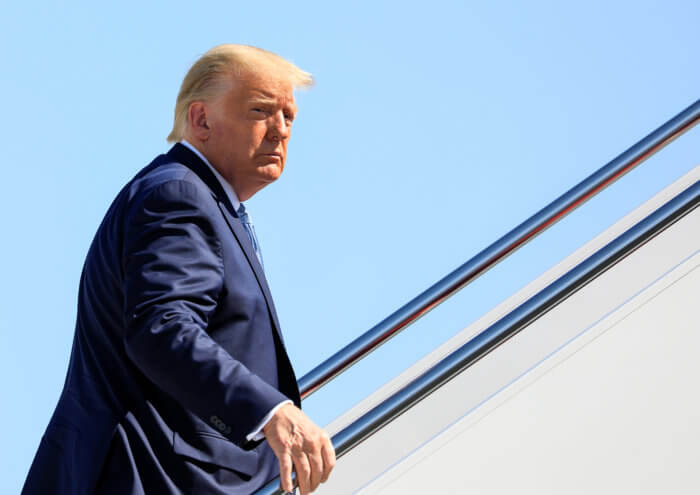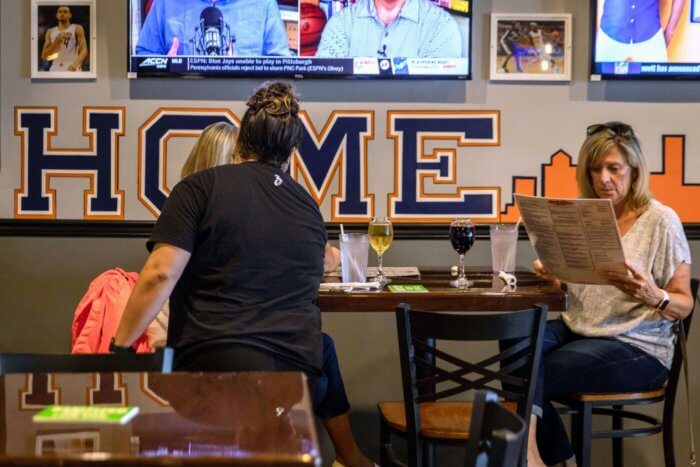While most states are reliably Republican or Democratic in U.S. presidential elections, about a dozen are key battlegrounds that could swing for either President Donald Trump or challenger Joe Biden in November.
Here are the states that will play a critical role in delivering the 270 electoral college votes needed to win the White House.
TOSS-UPS
FLORIDA
Recent opinion polls show Trump and Biden in a close race in Florida, a big prize with 29 electoral votes. The state is particularly important for Trump – no Republican has won the presidency without Florida since Calvin Coolidge in 1924.
Trump won Florida over Hillary Clinton in 2016 by just 1.2 percentage points. In 2020, he is making a strong play for Hispanic votes, namely conservative-leaning Cuban Americans, while Biden is running ahead of Clinton’s support among the state’s seniors, another crucial voting bloc, and white voters.
NORTH CAROLINA
Trump won North Carolina and its 15 electoral votes by 3.6 percentage points over Clinton four year ago. The Southern state has gone consistently Republican in presidential elections since 1980, except for Obama’s victory there in 2008.
Biden has a slight lead in recent polls. He could be helped by Democratic enthusiasm in the toss-up state’s increasingly blue urban centers, eroding support for Trump in suburbs over his handling of COVID-19, and momentum from down-ballot races.
ARIZONA
Latino voters are crucial in Arizona, where Trump won its 11 electoral votes by almost 4 percentage points in 2016. Once a conservative stronghold, the state in 2018 elected a Democratic senator amid rapid growth in Maricopa County, which contains Phoenix, and a shift in suburban voters toward the Democrats.
Latinos, who constitute the Democratic base in the state, have grown from a quarter of the population to a third in the past two decades. Biden has seen his edge with Latinos shrink as Republicans have focused heavily on the state, while Trump has come under fire for his administration’s halting response to the coronavirus pandemic, which has disproportionately harmed minority groups.
GEORGIA
Trump won Georgia in the 2016 by almost 5 percentage points. A repeat victory in the Southern state that has not backed a Democratic candidate for president since Bill Clinton in 1992 is crucial for his re-election chances.
With 16 electoral votes, it is one of the traditionally Republican strongholds where Biden has made an advertising push, as the growth of its urban core around Atlanta has energized Democratic hopes of putting it in play come November. Trump still holds a narrow edge on Biden in most polls.
LEANING DEMOCRATIC
WISCONSIN
Trump and Biden each are making a play for the 10 electoral votes in Wisconsin, where Trump four years ago was the first Republican presidential candidate to win the state since 1984. The state became a flashpoint in the country’s reckoning over race and policing after the shooting in August of a Black man by a white police officer in the city of Kenosha.
After Black voter participation in Wisconsin sank in 2016 compared with previous elections, Biden’s campaign is betting that energized Democratic-leaning Black voters this year will help overcome Trump’s less than-1-percentage-point margin of victory over Clinton there. Biden has an advantage over Trump in most recent Wisconsin opinion polls.
MICHIGAN
Four years after being among the Midwestern battlegrounds that delivered Trump’s upset victory, Michigan, with its 16 electoral votes, has polled steadily in favor of Biden ahead of the Nov. 3 election.
Analysts believe if Biden can mobilize African-American voters in the state’s largest city, majority Black Detroit, it could go a long way to overcoming the fewer than 11,000-vote advantage Trump had in the state in 2016. Both candidates are trying to convince voters they are best suited to revive the economy in the state, where the once-proud manufacturing base has suffered from decades of overseas outsourcing.
PENNSYLVANIA
Trump won the Rust Belt state of Pennsylvania by just 45,000 votes in 2016, promising to bring blue-collar jobs back to the economically depressed region. The president typically polls well on his handling of the economy, but overall he is trailing Biden in recent opinion polls in Pennsylvania by several percentage points.
Trump has attacked the former vice president for his prior support of liberalizing trade deals that facilitated the offshoring of jobs. Biden has chosen the state where he was born to deliver some of his most forceful speeches of the campaign, including a late August address in which he condemned Trump for fomenting violence at nationwide protests over racial equality.
MINNESOTA
Trump lost Minnesota and 10 electoral votes in 2016, as Republicans have done in every presidential election since Richard Nixon won in 1972. Polls show Biden with a moderate advantage in the state, though that edge appears to have narrowed as Election Day draws closer.
The state was the epicenter of racial equality protests that swept the nation following the late May police killing of a Black man, George Floyd, in its largest city, Minneapolis. Trump has sought to capitalize on the unrest, arguing in a gambit to expand his base that suburban voters, particularly women, are weary of the chaos surrounding the protests.
NEW HAMPSHIRE
Biden enjoys a moderate edge in most recent New Hampshire polls, though the state typically tracks among the most conservative in the U.S. Northeast. Its four electoral votes went to Clinton in 2016, but by the narrowest of margins – less than a half of a percentage point.
Some prominent New Hampshire conservatives count themselves anti-Trumper Republicans and have endorsed Biden. Still, New Hampshire remains a focus for Trump because it could provide a thin electoral college buffer should Biden manage to win back some of the Midwestern and Rust Belt states Democrats lost four years ago.
NEVADA
Nevada has been consistently Democratic in presidential elections since 2008 when Obama turned it blue as rapid economic and population growth in the state made it more urban. Clinton beat Trump there in 2016 by 2 percentage points, and Biden is looking to expand on that edge to win its 6 electoral voters. Most polls favor the former vice president by several points, though his lead has narrowed since the summer.
Trump’s campaign sued Nevada to block a law that would allow for the mailing of ballots to all registered voters, something Republicans argue without evidence could lead to widespread voter fraud.
LEANING REPUBLICAN
TEXAS
Biden has forced Trump onto the defensive in Texas, with polls showing the president holding just a narrow lead in the staunchly Republican state. Boasting the second-largest share of electoral votes at 38, the huge prize of Texas has grown more competitive with its increasingly diverse population and politically moderating suburbs.
Jimmy Carter was the last Democrat to carry the state in 1976, and Trump easily won in 2016 by about 9 percentage points. Flipping the state could require huge money outlays by Democrats, given its large size and multiple media markets, investments that some believe Biden could better spend in more clear-cut swing states, such as Florida or Pennsylvania.
IOWA
In most polls, Iowa, with its six electoral votes, leans narrowly toward Trump, who won the state easily in 2016. The rural Midwestern state is reliably Republican in most voting, but it has sided with Democrats in six of the past eight presidential contests, the exceptions being Trump in 2016 and George W. Bush in 2004.
Trump has sought to appeal to working-class voters in the overwhelmingly white state with his hard line on illegal immigration and trade issues. But the state’s farmers bore the brunt of Trump’s trade war with China, as Beijing responded to U.S. tariffs with cuts to agriculture imports so important to its economy. Biden has argued that working-class people and farmers want good policy, not federal subsidies to counter the damage caused by the trade war.
OHIO
Ohio has swung between Republican and Democratic candidates for decades. Trump won the state handily in the 2016 election, beating Clinton by more than 8 percentage points, while Obama carried it in 2008 and 2012.
This year, Trump holds a narrow edge in Ohio in most polls. But Democrats hope they can win back the state’s 18 electoral votes as suburban, college-educated and women voters have grown more disenchanted with Trump’s coronavirus response. As in Michigan and Wisconsin, high turnout in cities such as Dayton among Black voters, who have been disproportionately affected by the virus, will be key to Biden’s chances of winning Ohio.
































